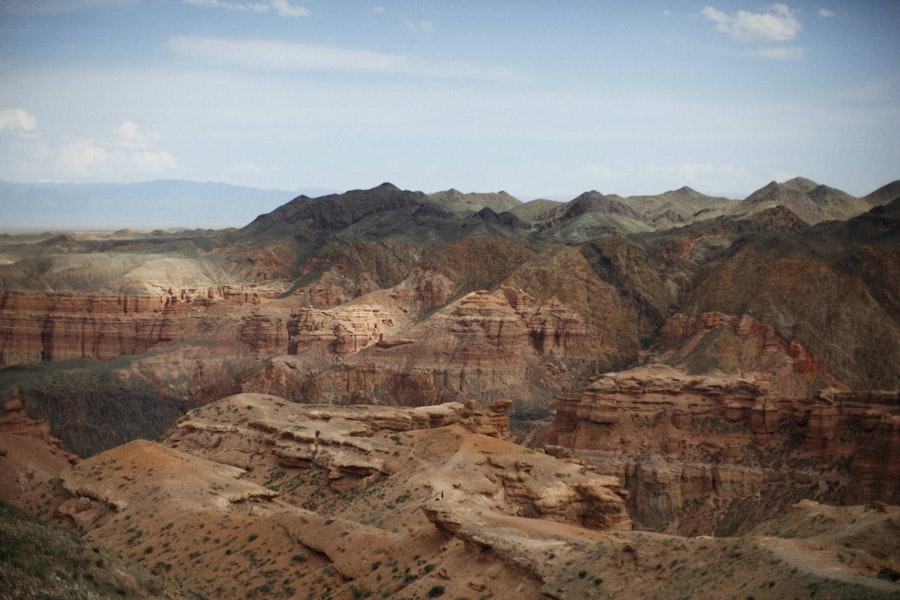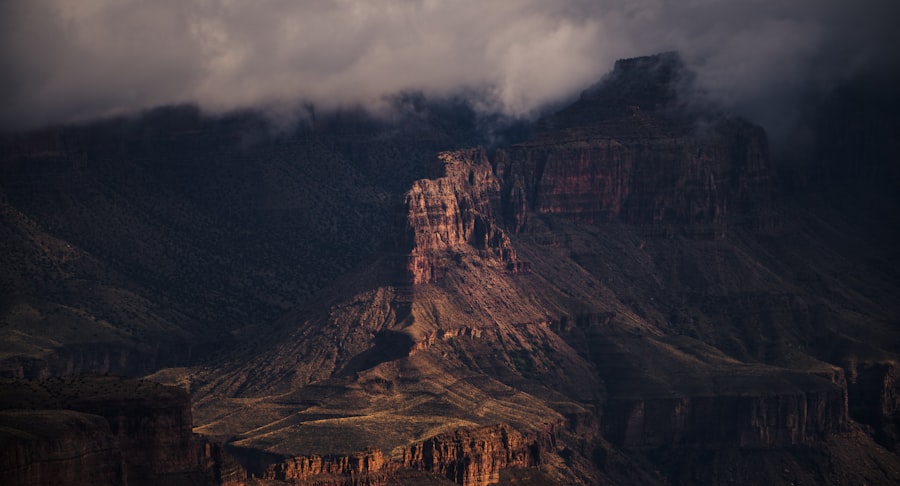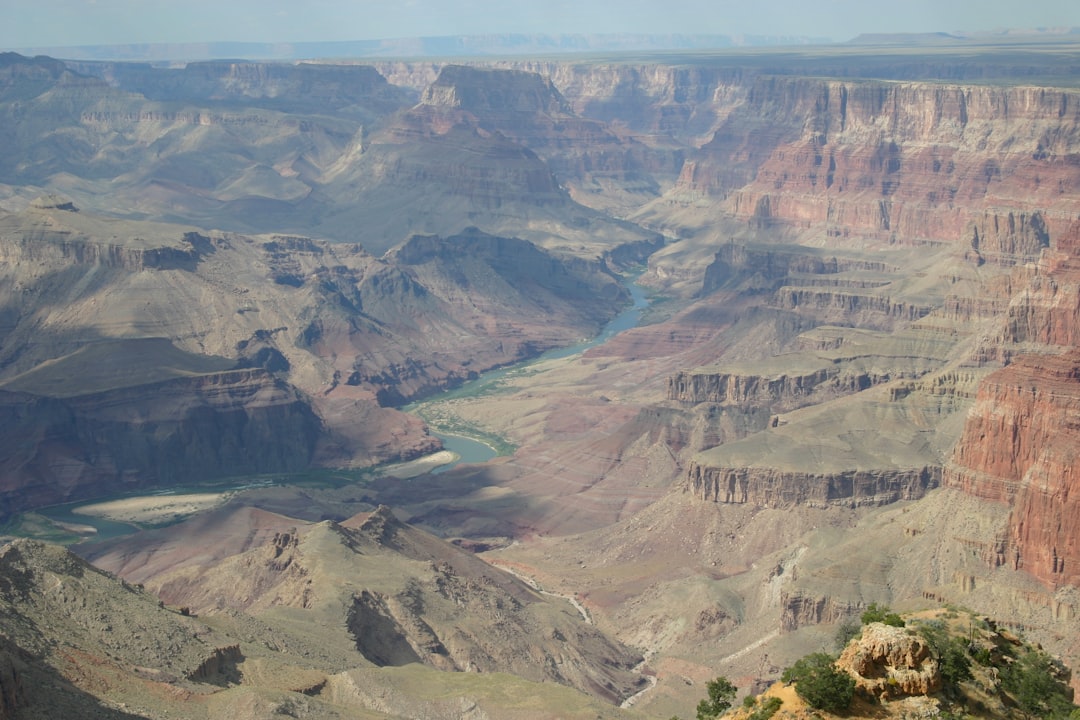The Grand Canyon, with its breathtaking vistas and intricate geological formations, has long been a source of fascination and mystery. Among the many tales that swirl around this natural wonder, the legend of a lost city hidden within its depths stands out. This mythical city, often described as a place of great wealth and advanced civilization, has captured the imaginations of adventurers, historians, and treasure seekers alike.
According to the legend, the city was once home to a thriving community that possessed knowledge and riches far beyond what was known to the outside world. Over time, however, it was said to have been swallowed by the canyon, leaving behind only whispers of its existence. The allure of this lost city is not merely a product of folklore; it is intertwined with the very essence of the Grand Canyon itself.
The vastness of the canyon, with its steep cliffs and winding rivers, creates an atmosphere ripe for exploration and discovery. Many believe that the city could hold secrets about ancient civilizations that once flourished in North America. As stories of the lost city spread, they inspired countless expeditions into the canyon’s rugged terrain, each one hoping to uncover the truth behind the legend.
The combination of myth and reality has made the Grand Canyon a focal point for those seeking adventure and knowledge.
Key Takeaways
- The Legend of the Lost City of the Grand Canyon
- Historical Accounts and Native American Lore
- Early Explorations and Expeditions
- Modern Day Search and Discoveries
- Theories and Speculations about the Lost City
Historical Accounts and Native American Lore
Historical accounts of the Grand Canyon and its surrounding areas reveal a rich tapestry of Native American lore that speaks to the existence of ancient cities and civilizations. Tribes such as the Hopi, Navajo, and Havasupai have long inhabited the region, passing down stories through generations that hint at a time when their ancestors thrived in harmony with the land. These narratives often include references to sacred sites and hidden treasures, suggesting that the lost city may not be entirely fictional but rather rooted in historical truths.
The Hopi people, in particular, have a profound connection to the Grand Canyon. Their oral traditions recount tales of ancestors who lived in great cities built into the canyon walls. These stories often emphasize themes of spirituality and respect for nature, indicating that the lost city was not merely a place of material wealth but also a center of cultural significance.
As historians delve into these accounts, they find that they provide valuable insights into the lives and beliefs of those who once called this majestic landscape home. The intersection of history and mythology creates a compelling narrative that continues to intrigue researchers and explorers.
Early Explorations and Expeditions

The quest to uncover the lost city of the Grand Canyon gained momentum during the 19th century as explorers began to venture into its uncharted territories. One of the most notable figures in this pursuit was John Wesley Powell, who led an expedition down the Colorado River in 1869. Powell’s journey not only mapped much of the canyon but also sparked interest in its hidden secrets.
His accounts of towering cliffs and hidden caves fueled speculation about what lay beneath the surface, including the possibility of ancient ruins. As word spread about Powell’s findings, other explorers followed suit, each hoping to make their mark by discovering the fabled city. Some expeditions were driven by scientific curiosity, while others were motivated by tales of treasure and glory.
These early adventurers faced numerous challenges, from treacherous terrain to unpredictable weather conditions. Despite these obstacles, their determination laid the groundwork for future explorations and ignited a passion for uncovering the mysteries of the Grand Canyon.
Modern Day Search and Discoveries
| Discovery | Year | Location |
|---|---|---|
| Gravitational Waves | 2015 | United States |
| Exoplanets | 1992 | Various |
| Higgs Boson Particle | 2012 | Switzerland |
| CRISPR Gene Editing | 2012 | United States |
In recent years, advancements in technology have breathed new life into the search for the lost city within the Grand Canyon. Archaeologists and researchers are now employing sophisticated tools such as ground-penetrating radar and aerial drones to explore areas that were once deemed inaccessible. These modern techniques have led to significant discoveries, including evidence of ancient structures that suggest human habitation long before European settlers arrived.
Moreover, collaborations between scientists and Native American tribes have enriched the search for knowledge about the canyon’s past. By combining traditional ecological knowledge with modern scientific methods, researchers are gaining a more comprehensive understanding of how ancient civilizations interacted with their environment. This partnership not only aids in uncovering historical truths but also fosters respect for indigenous cultures and their connection to the land.
Theories and Speculations about the Lost City
Theories surrounding the lost city of the Grand Canyon abound, each offering a unique perspective on what might lie hidden within its depths. Some scholars propose that it could be linked to ancient civilizations such as the Ancestral Puebloans or even earlier cultures that thrived in North America. These theories are often supported by archaeological findings in nearby regions that indicate sophisticated societies with advanced agricultural practices and architectural skills.
Conversely, some speculations lean towards more fantastical interpretations, suggesting that the lost city could be a remnant of an advanced civilization akin to Atlantis or other legendary societies. These ideas often capture public imagination but lack substantial evidence. Nevertheless, they contribute to the mystique surrounding the Grand Canyon and encourage ongoing exploration and inquiry into its secrets.
Geographical and Geological Significance of the Grand Canyon

The Grand Canyon is not only a breathtaking natural wonder but also a geological marvel that tells a story spanning millions of years. Formed by the relentless erosion of the Colorado River, it showcases layers of rock that reveal Earth’s history in vivid detail. The canyon’s unique geological formations provide valuable insights into past climates, ecosystems, and geological processes.
From a geographical standpoint, the Grand Canyon serves as a crucial watershed for the surrounding region. Its diverse ecosystems support a wide array of flora and fauna, making it an essential habitat for many species. The interplay between geology and ecology creates a dynamic environment that has fascinated scientists for generations.
Understanding this significance is vital not only for appreciating the canyon’s beauty but also for recognizing its role in broader environmental contexts.
Cultural and Archaeological Importance of the Lost City
The cultural significance of the lost city extends beyond mere legend; it represents a connection to ancestral heritage for many Native American tribes. The stories passed down through generations serve as reminders of their deep-rooted ties to the land and its history. As researchers continue to explore potential archaeological sites within the Grand Canyon, they are uncovering artifacts that shed light on these ancient cultures.
Archaeological findings have revealed evidence of dwellings, tools, and ceremonial sites that suggest complex social structures existed long before European contact. These discoveries not only validate Native American oral histories but also highlight the importance of preserving cultural heritage in an ever-changing world. The lost city symbolizes a bridge between past and present, reminding us of our shared human history.
Challenges and Obstacles in Exploring the Grand Canyon
Exploring the Grand Canyon is fraught with challenges that can deter even the most seasoned adventurers. The rugged terrain presents physical obstacles such as steep cliffs, narrow trails, and unpredictable weather conditions. Navigating these elements requires careful planning and preparation, as well as an understanding of the canyon’s unique ecosystem.
Many areas within the Grand Canyon are protected due to their ecological significance or cultural heritage. Researchers must navigate these regulations while striving to uncover new information about potential archaeological sites.
Balancing exploration with preservation is crucial to ensuring that future generations can appreciate both the natural beauty and historical importance of this iconic landscape.
Preservation and Conservation Efforts for the Lost City
As interest in exploring the lost city grows, so too does awareness of the need for preservation and conservation efforts within the Grand Canyon. Organizations dedicated to protecting this natural wonder work tirelessly to ensure that archaeological sites are safeguarded from damage caused by human activity or environmental factors. These initiatives often involve collaboration between government agencies, Native American tribes, and conservation groups.
Public education plays a vital role in these efforts as well. By raising awareness about the cultural significance of sites within the canyon, visitors can develop a deeper appreciation for its history and contribute to its preservation. Sustainable tourism practices are encouraged to minimize impact on fragile ecosystems while allowing people to experience the grandeur of this remarkable landscape.
The Future of Exploration in the Grand Canyon
The future of exploration in the Grand Canyon holds great promise as technology continues to evolve and interdisciplinary collaborations expand. Researchers are increasingly utilizing innovative methods such as remote sensing and 3D modeling to gain insights into previously inaccessible areas. These advancements may lead to groundbreaking discoveries about ancient civilizations that once inhabited this majestic landscape.
Moreover, as interest in archaeology grows among younger generations, there is potential for increased engagement with local communities and indigenous tribes. This collaborative approach can foster respect for cultural heritage while encouraging new perspectives on exploration. The future may see a harmonious blend of tradition and innovation as explorers seek to unravel more mysteries hidden within this iconic canyon.
Visitor Information and Tours for Exploring the Grand Canyon
For those eager to experience the wonders of the Grand Canyon firsthand, numerous visitor information centers and guided tours are available throughout the region. These resources provide valuable insights into both natural features and cultural history while ensuring visitors can navigate safely through this vast landscape. Guided tours offer opportunities for exploration led by knowledgeable experts who share stories about both geological formations and indigenous cultures associated with the canyon.
Whether hiking along scenic trails or embarking on river rafting adventures, visitors can immerse themselves in an unforgettable journey through one of nature’s most awe-inspiring creations. With careful planning and respect for preservation efforts, exploring the Grand Canyon can be an enriching experience that connects individuals with both history and nature alike.
The Grand Canyon has long been a source of mystery and intrigue, with tales of lost cities and ancient civilizations captivating explorers and historians alike. One such story is that of the Grand Canyon’s lost city, a legend that has sparked numerous expeditions and theories over the years. For those interested in delving deeper into this fascinating topic, a related article can be found on the X File Findings website. This article explores various theories and historical accounts surrounding the enigmatic lost city. To read more about these intriguing findings, visit the article by clicking on this link.
WATCH THIS! 👺 The Grand Canyon Cover-Up: Did the Smithsonian Hide Evidence of Giants?
FAQs
What is the Grand Canyon’s Lost City?
The Grand Canyon’s Lost City refers to an ancient Ancestral Puebloan settlement located within the Grand Canyon National Park.
How old is the Grand Canyon’s Lost City?
The settlement is estimated to be around 800 years old, dating back to the 12th century.
Where is the Grand Canyon’s Lost City located?
The Grand Canyon’s Lost City is situated within the boundaries of the Grand Canyon National Park in Arizona, USA.
What is the significance of the Grand Canyon’s Lost City?
The site provides valuable insights into the lives and culture of the Ancestral Puebloan people who inhabited the region centuries ago.
Can visitors access the Grand Canyon’s Lost City?
Access to the site is restricted to protect its archaeological and cultural significance. Visitors can learn about the settlement through guided tours and interpretive programs offered by the National Park Service.
